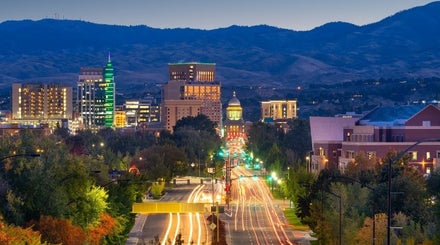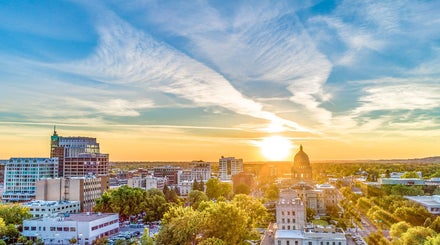
You’ve likely heard of geothermal energy or heat before, but how widely used it is in Boise may just be the city’s best kept secret. Not only does geothermal heat much of downtown, a few hundred homeowners benefit from it, too.
Imagine if you could have your own private hot springs in your backyard. Or better yet, your own private outdoor heated pool, for very little cost. Some East End residents are living this dream, thanks to geothermal heat.
What is Boise Geothermal Heat?
You’ve likely heard of geothermal energy before – the U.S. has many geothermal power plants, which use heat from deep within the Earth to produce steam that is converted into electricity.
Geothermal heat is similar but less complicated. In Boise, it simply involves tapping into an underground hot water supply and piping it above ground.
Boise’s geothermal heat comes from a hot, underground river that runs beneath the East End foothills. In the late 1890s, settlers began digging wells to access this hot water (which runs at about 177°F). They piped it into Victorian homes on the aptly named Warm Springs Avenue and into downtown buildings, including the Idaho State Capitol Building.
In fact, Boise was the first city in the nation to utilize geothermal heating, and still maintains the largest municipally operated geothermal system in the country.
How Geothermal Makes Boise Real Estate Unique
Houses with geothermal heating are warmed with hot water instead of electricity or natural gas. This makes it much less expensive, and greener, than traditional heat. It’s also pretty exclusive in Boise, as only roughly 300 homes in the East End neighborhood are connected to the original geothermal pipeline under Warm Springs Avenue.
According to urban legend, the water flows through a wooden pipe from the 1890s that never rots because the water never stops moving. However, that is just a legend – the pipe is concrete and is scheduled to soon be replaced (by more concrete).
Residents on this pipeline belong to the Boise Warm Springs Water District. They pay the district for heating their homes and water instead of other utility companies. Because it takes very little energy to power the pump that diverts the geothermal water, and it’s a local resource, it costs significantly less than electricity or natural gas.
For example, it costs around $400 a year to heat a three-bedroom home off Warm Springs, along with its garage, shop, shed, and a hot tub. Hot water is included in this cost – homeowners spend roughly another $200 annually on their non-hot-water bill.
By comparison, a typical Boise homeowner pays about $463 annually for natural gas or $1,512 to warm their home with electric heat.
Geothermal homes aren’t any harder or more expensive to insure. The biggest detractor associated with geothermal heating is maintaining and replacing infrastructure – e.g. the pipes that carry hot water to businesses and households.
The other big hurdle, in Boise at least, is trying to get an East End home hooked up to the water district. The district is selective about permitting new homes and businesses to tap into the geothermal line as a way of preserving the resource for its existing members; new additions happen only very rarely.
This makes the homes that are already on the geothermal line all the more exclusive.
Energy and Green Benefits from Using Geothermal
Geothermal heating is also incredibly green, meaning that using it doesn’t harm the environment. Very little energy is required to power the system’s pump and it doesn’t use any fossil fuels. Its carbon footprint is incredibly small.
It’s also sustainable energy and is considered a renewable resource. The amount of hot water drawn from Boise’s underground geothermal river isn’t enough to deplete its overall supply. In fact, many East End homeowners use enough geothermal water to also heat a hot tub, swimming pool, or even a small shrimp farm (really!).
Boise’s One-of-a-Kind Geothermal System
Boise is one of a handful of cities in the nation that has access to geothermal heat. The city is unique in that it has worked to maintain and develop its geothermal infrastructure for more than a century.
More than twenty miles of geothermal pipeline heat some of Boise’s most iconic buildings – including JUMP, City Hall, the Treasure Valley YMCA, Boise State University, the Veterans Administration and the State Capitol Building.
Overall, roughly one-third of downtown Boise is geothermally heated, or around 6 million square feet of business space, at a total cost of only about $1,000 per month.
As you can see, this renewable, natural resource is incredibly affordable. Boise is one of a few lucky cities that has access to it – and has smartly developed it for public buildings and for the benefit of private homeowners.
Boise’s geothermal homes may be rare gems but they do come on the market. If this amenity sparks your interest, get in touch and we’ll get right to work putting you in the geothermally-heated home of your dreams.







Leave A Comment